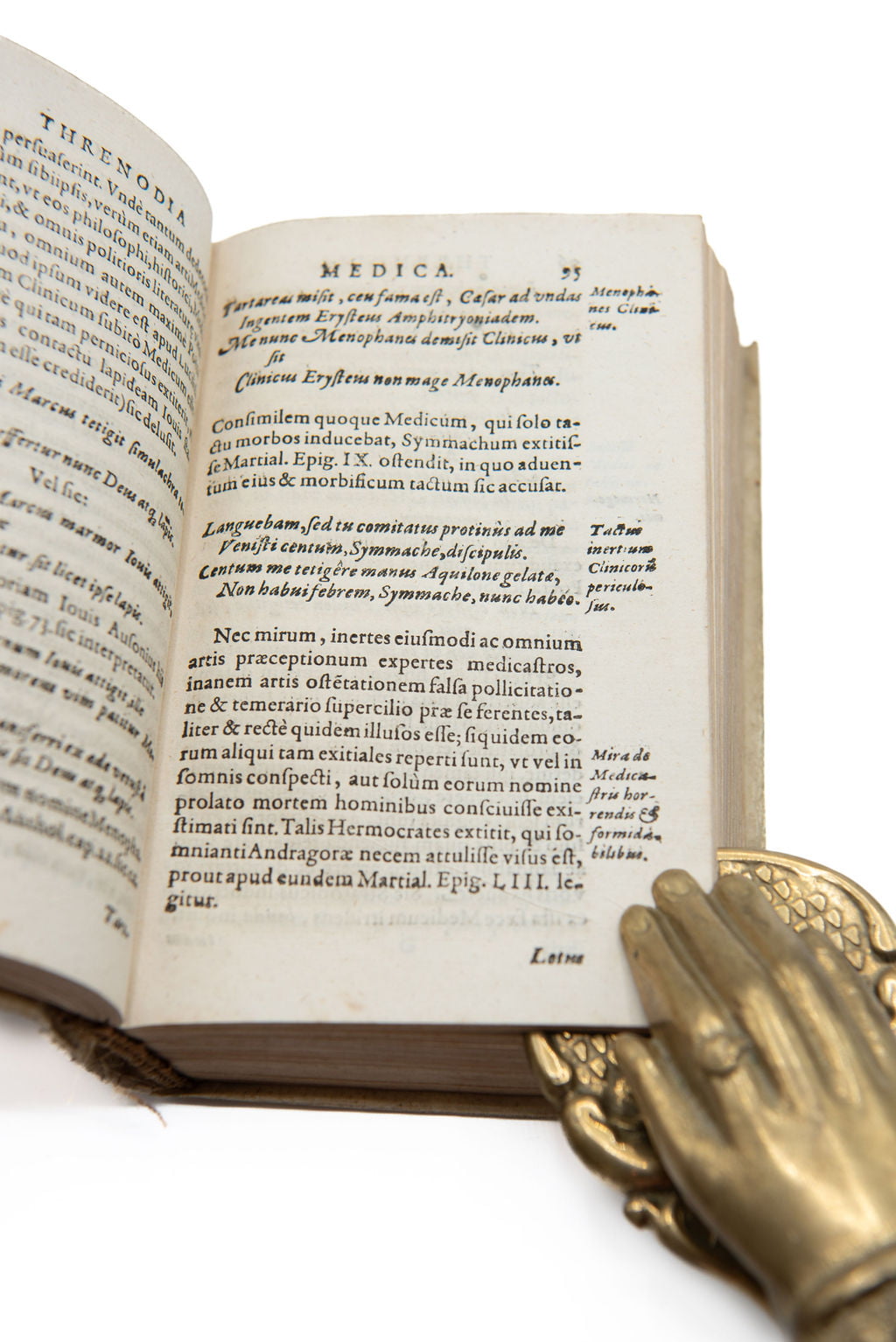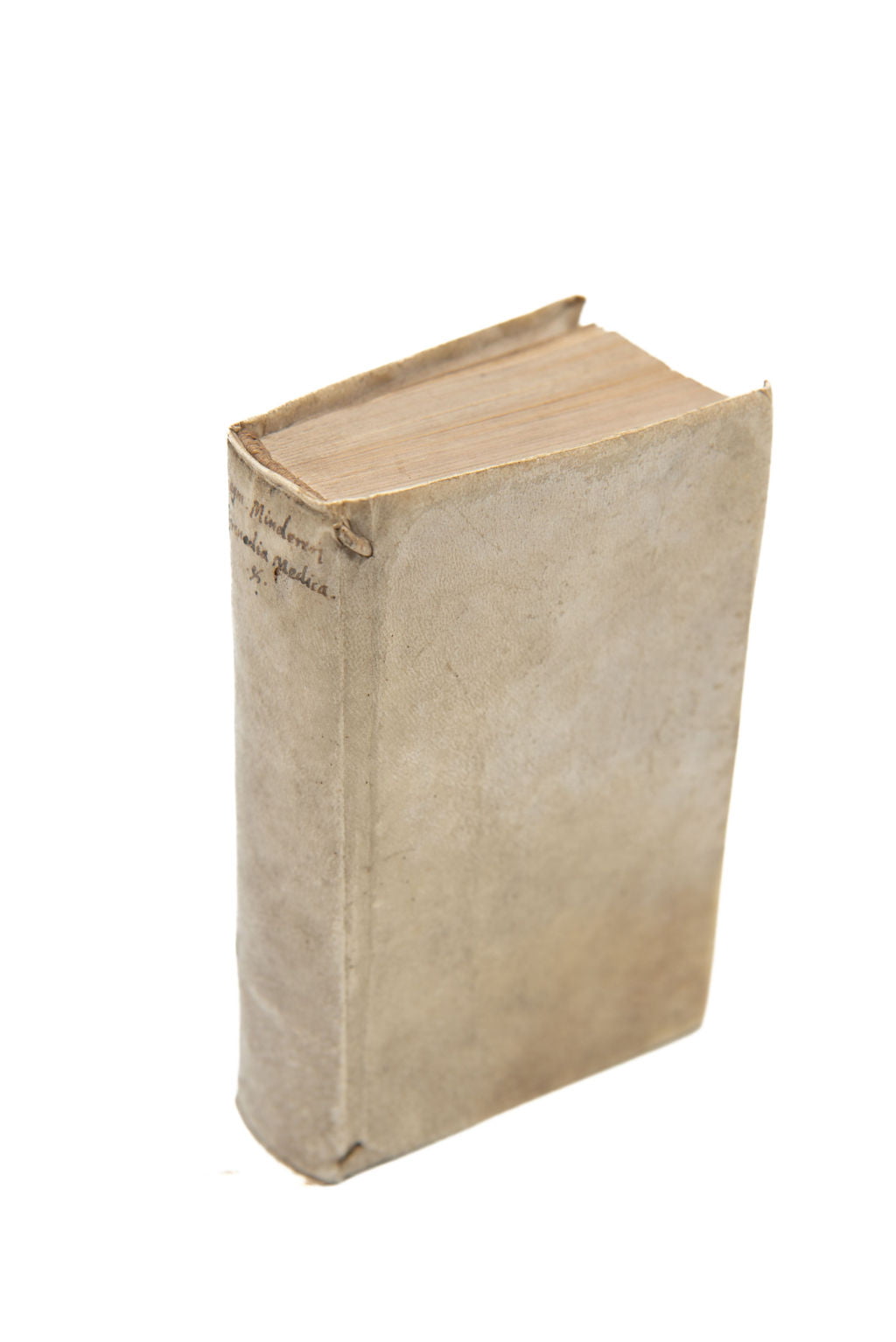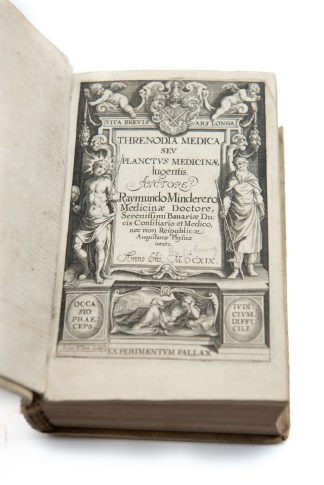MINDERER, Raymund.
Threnodia Medica Seu Planctus Medicinae lugentis
Augsburg, Andreas Aperger, 1619£1,950.00
FIRST EDITION. 8vo, pp. (xlviii) 597 (xix). Roman and italic letter, floriated initials, ornate headpieces and endpieces, handsome engraved architectural t-p with putti and arms of the house of Oettingen-Wallerstein at head, standing figures at the sides, signed “Lucas Kilian sculp(sit)”. Occasional very light yellowing. A very good copy, crisp and clean in contemporary vellum, early ms. title inked to spine.
First edition of this fascinating work by the German physician Raymund Minderer (1570-1621), addressing the most common misconceptions, superstitions and false notions concerning medicine and its practice in the 16th century. In the dedication, Minderer states that Medicine, the most noble and important of all the arts, has been “confused, weakened, ruined and destroyed by (men’s) negligence, insolence and impudence throughout the centuries”; for this reason, Medicine cries and sighs. The work is divided into 26 chapters, each beginning with “Medicine cries because”, presenting and explaining Medicine’s complaints: for example, “medicine cries because in the past it was exercised by great kings, priests and philosophers, and nowadays by farmers”, “medicine, which is simple and right, complains because it has been turned from the way of truth by superstition” or “Medicine, which is beneficial and salutary, is considered guilty of murder because of the crimes and errors of ‘Pseudo-chemists’ – this last section, following Paracelsus, argues in favour of a correct use of chemistry in medicine. In an interesting chapter, Minderer indicates music as a means of healing in the treatment of mental diseases, such as melancholia. Throughout the work, the author also outlines the differences between Paracelsianism and Galenism.
After obtaining his doctorate at Ingolstadt, Minderer served as a military doctor for a few years and then settled in Augsburg, where he was appointed city doctor. He also worked as a consultant for Emperor Matthias in Vienna and Elector Maximillian I. Remarkably, Minderer introduced the use of sulfuric acid in the treatment of fevers, and discovered ammonium acetate, which is still known today as “Liquor (or Spiritus) Mindereri”. A prolific writer, he is the author of works on military surgery (Medicina militaris, 1620), the plague (De pestilential liber, 1608) and pharmacology (De Calcantho, 1618).
The”finely engraved frontispiece i” by the celebrated German engraver Lucas Kilian (1579-1637), famous for his portrait of Albrecht Dürer, one of the best-known representations of the famous painter to posterity.
USTC 2083184; BM STC Ger. C17, M1125; Wellcome I, 4332; Krivatsy 7930; Duveen p. 405. Not in Heirs of Hippocrates, Garrison-Morton, Brunet or Graesse.In stock





